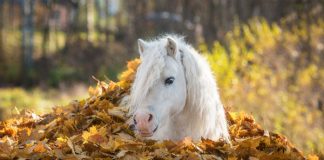Rain rot, also known as dermatophilosis, is a common skin condition affecting horses, particularly in wet and humid conditions. Learn more about what this condition is, symptoms to look for, and how to treat it.
Symptoms: Patches of crusty sores with matted hair and hair loss, often on the back but also on the head, girth and other areas. Detached crusts have small tufts of hair attached; the sores may ooze serum or pus. If left undisturbed, the lesions aren’t itchy or painful, but crust removal or friction from tack and riding can cause discomfort.
What to do: This is not an emergency. Many cases are somewhat self-limiting, clearing up spontaneously in about three weeks, especially if the weather becomes drier and the horse sheds his winter coat. To speed healing, lather the area with Betadine scrub and gently remove the crusts. If your horse protests too much because it hurts, you may have to do this over the course of a few days. Once you’ve removed all the crusts, apply an antiseptic solution, such as Betadine or Novalsan, once daily for five days. Isolating an infected horse will help prevent the spread of rain rot. Don’t share the horse’s tack or grooming tools with other horses, and regularly disinfect or wash brushes, blankets and other items used on the infected horse.
Outlook: Rain rot usually responds well to treatment, but may return if the conditions described above recur.
◆ Back to Horse Health Glossary
This article originally appeared in the 2012 issue of Horses USA





